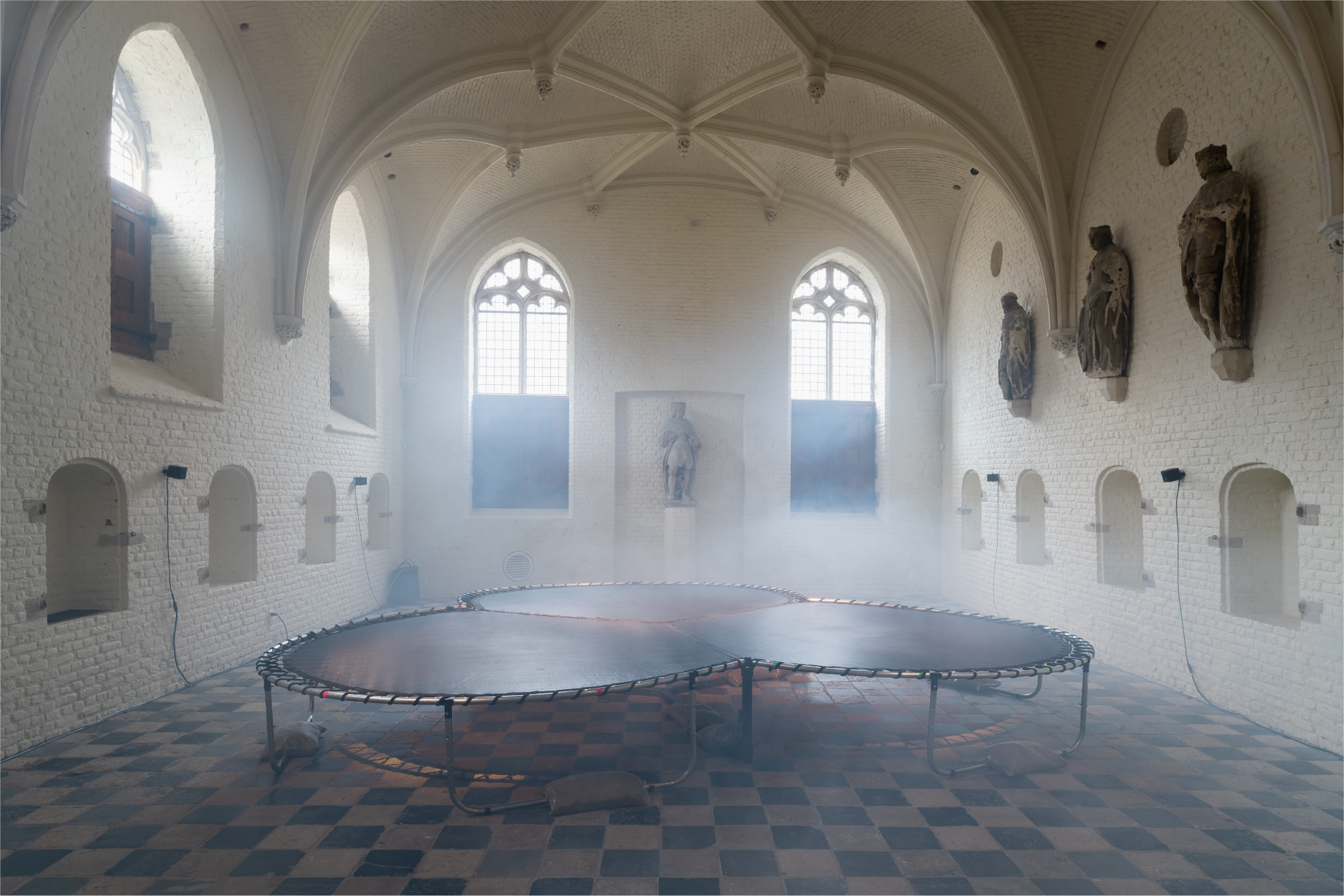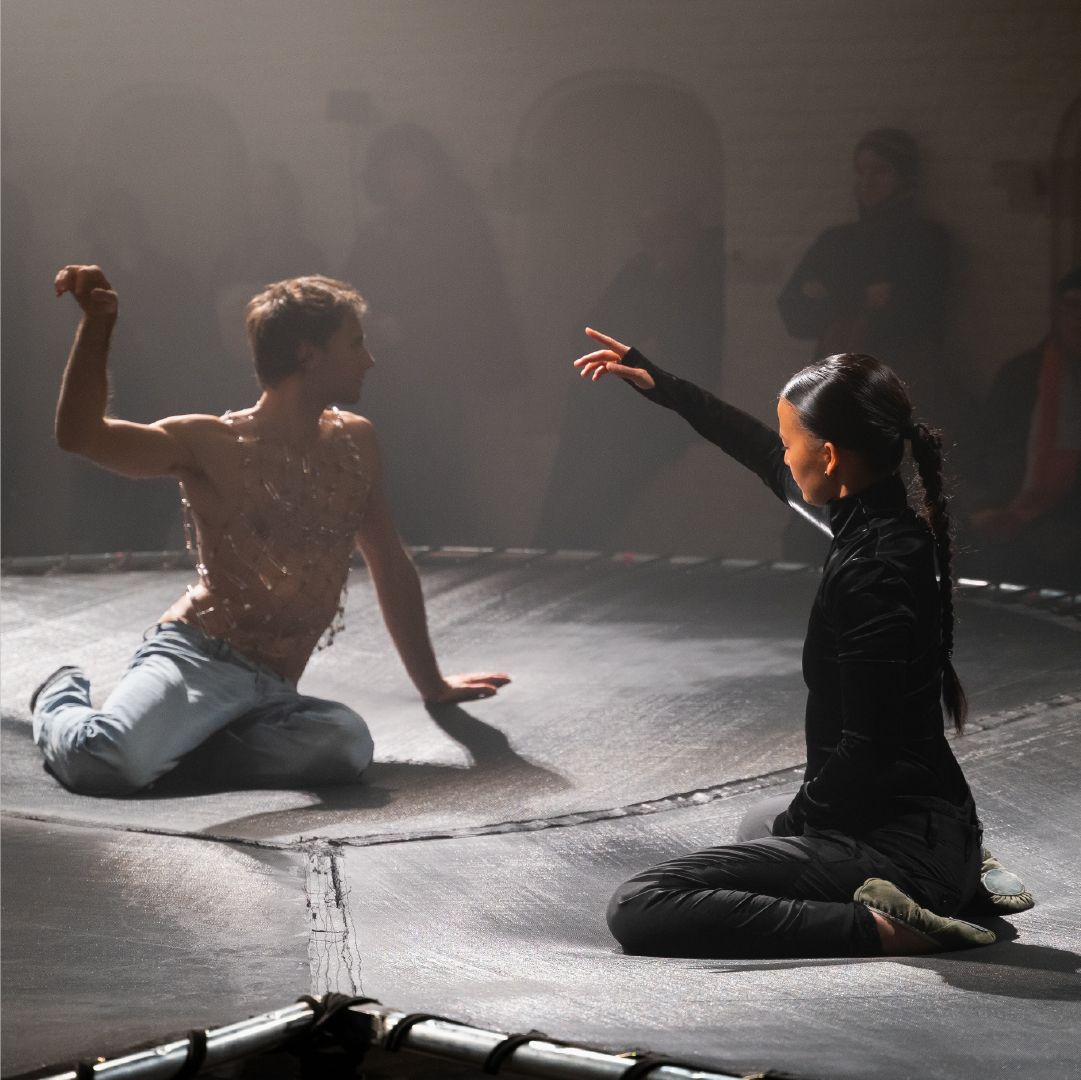
Eglė Budvytytė and Marija Olšauskaitė, Song Sing Soil, 2023
The NJP Commission is a new exhibition format presented by the Nam June Paik Art Center in 2024. Through the NJP Commission, the Nam June Paik Art Center seeks to present new productions by mid-career artists who deal with significant agenda in contemporary art and an in-depth look at their perceptions of the art world, and, thus to demonstrate the museum’s performativity. As museums underwent closure during the pandemic, those who ran them had to imagine a world in which they engaged with viewers by transmitting exhibitions that only existed online as floating images and ponder their role in society.
The NJP Commission reconsiders the meaning of museums and art as a “performative museum” and an “active museum” in an uncertain world. A total of four curators, including the curators from outside the Nam June Paik Art Center, co-curated the exhibition, which enabled the expansion of artistic contemplation, commissioning works by four artists that capture the crucial issues of contemporary art. The cultural backgrounds of Anne Duk Hee Jordan, Eglė Budvytytė, Tetsuya Umeda, and Chan Sook Choi differ, as do their means of expression and attitudes, but they all interpret and express the contemporary conditions that they face using a unique artistic language. With undefined chance performances consisting of gestures and sound, the artists express solidarity with objects, nature, and other non-human entities. Further, in focusing on migration, ecology, and marginality, they present a polyphonic voice, with tumbleweeds, microorganisms, and robots of teapot and clams singing together.
The exhibition’s title, Humming Chorus, stems from imagining each artist’s work as a song consisting of diverse tones and voices and refers to their harmony, though the sound and rhythm may differ. The artists reflect on the ecosystem and nature devastated by anthropocentric practices, and, by expressing solidarity with the objects surrounding us, they exhibit their identities as performative artists. Their works encourage viewers/visitors to realize that museums are not merely spaces for the “exhibition” of beauty but places for sharing today’s vital stories and communicating them through art. Art, museums, and our lives in the here and now will form an intimate relationship once again and move forward by singing together.
Artists
Anne Duk Hee Jordan
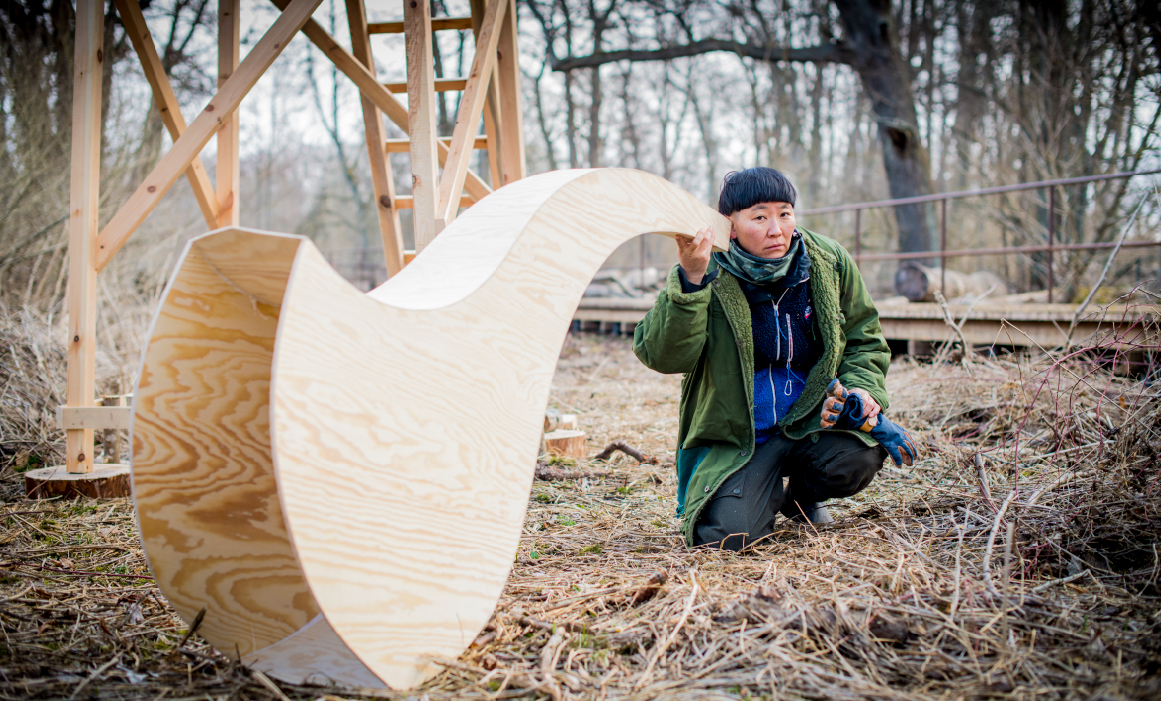
Anne Duk Hee Jordan explores the coevolution of humans and non-humans by presenting an immersive world of science fiction in a complex installation of video mapping, robots, and machine objects. To facilitate understanding of the ecosystem, her work begins by asking the fundamental question of what nature is and exploring her surroundings. From a microcosm of microorganisms, she captures the system and the principle of operation inherent in the cosmos and nature, in which humans and non-humans coexist, constructs a model, and expands it into the complex world. The world that she creates relates to the unclear boundary between land and sea, with noisy machines and hybrid objects creating an arbitrary order and balance. The artist’s perspective, derived from non-humans, does not categorize all living things but points to the fact that they relate to one another through an intimate connection that is not hierarchical. Jordan’s most recent work centers on “artificial stupidity,” in contrast to artificial intelligence (AI), which is rapidly replacing the roles and operations of humans. While questioning intelligence and stupidity, she stresses that AI, known to be smart, can make foolish decisions, suggest inaccurate directions, and provide the wrong information. Also, in other works that ask what intelligence is and how we can measure it, she alludes to the fact that “artificial stupidity” instead of AI can provide an alternative understanding of human behavior.
Anne Duk Hee Jordan was born in South Korea and lives and works in Berlin, Germany. She studied at the Weißensee Academy of Art Berlin and continued with a Meisterschüler*innen program at the Institut für Raumexperimente at the University of the Arts Berlin under Olafur Eliasson. Jordan has held solo exhibitions at Kunst Haus Wien (2024), Canal Projects in New York (2024), ZKM (Center for Art and Media) Karlsruhe (2024), The Bass in Miami (2023/2024), HEK (House of Electronic Arts) in Basel (2023), Baltic Art Center in Visby (2022), and MOMENTA Biennale de l’image in Montreal (2021). She has participated in group exhibitions at the Center for Contemporary Arts in Glasgow (2024), the Gwangju Biennale (2023), the Barbican Centre in London (2023), and transmediale in Berlin (2021-2022). Jordan is the recipient of the Leap Society Award (2024), the Grass Fellowship at the Baltic Art Center and Uppsala University Graduate School in Sustainability Studies (2022), an Arbeitsstipendium by the Senatskanzlei for Cultural Affairs Berlin (2021), and a working scholarship from the Stiftung Kunstfonds in Bonn (2019). She used to be a rescue diver and kinesthetic therapist and is currently a professor of new media at the Karlsruhe University of Arts and Design.
Eglė Budvytytė

Eglė Budvytytė works in various mediums, including music, poetry, film, and choreography, delicately combining performance and visual art. She has exhibited internationally before and since her first solo show at the Contemporary Art Centre in Vilnius in 2010. Initially relatively linguistic-focused, Budvytytė’s work began to incorporate performance around 2015. She is interested in reperceiving the invisible dominant norms, concepts, gender roles, and stereotypes. The relationship between the unconscious power of the collective and the individual and the interdependent and porous relationship between the body and the environment are revealed in Budvytytė’s work. For her, performance is a way to use the human body’s raw gestures or voices to subvert the sturdiness of social spaces and conventions. Since the late 2010s, her work has incorporated intuitive and powerful ways of using the body, such as karaoke, dragging, and running. Recently, she has been collaborating with artists from various disciplines to enhance the completeness of multi-layered forms. An example is her work with artist Marija Olšauskaitė and actress Julija Steponaitytė for the 2022 Venice Biennale.
Eglė Budvytytė was born in 1981 in Lithuania and is based in Vilnius and Amsterdam. She holds a bachelor’s degree in photography and media at the Vilnius Academy of Arts and Audio-Visual at the Gerrit Rietveld Academie before completing a Master of Fine Art at the Piet Zwart Institute. Budvytytė has participated in exhibitions at Frac île-de-France in Paris (2024), MAXXI, the National Museum of 21st Century Arts in Rome (2024), Canal Projects in New York (2023), the Venice Biennale (2022), the Riga International Biennial of Contemporary Art (2020), the Renaissance Society in Chicago, (2019), the Lofoten International Art Festival (2017), Block Universe Performance Art Festival in London (2017), Art Dubai (2017), Art Basel (2015), and the Biennale of Sydney (2014). Her works are in the collections of the National Gallery of Art in Vilnius, Moderna Museet in Malmö, and the Stedelijk Museum in Amsterdam.
* Song Sing Soil presented in Humming Chorus was developed together Eglė Budvytytė and Marija Olšauskaitė
Tetsuya Umeda
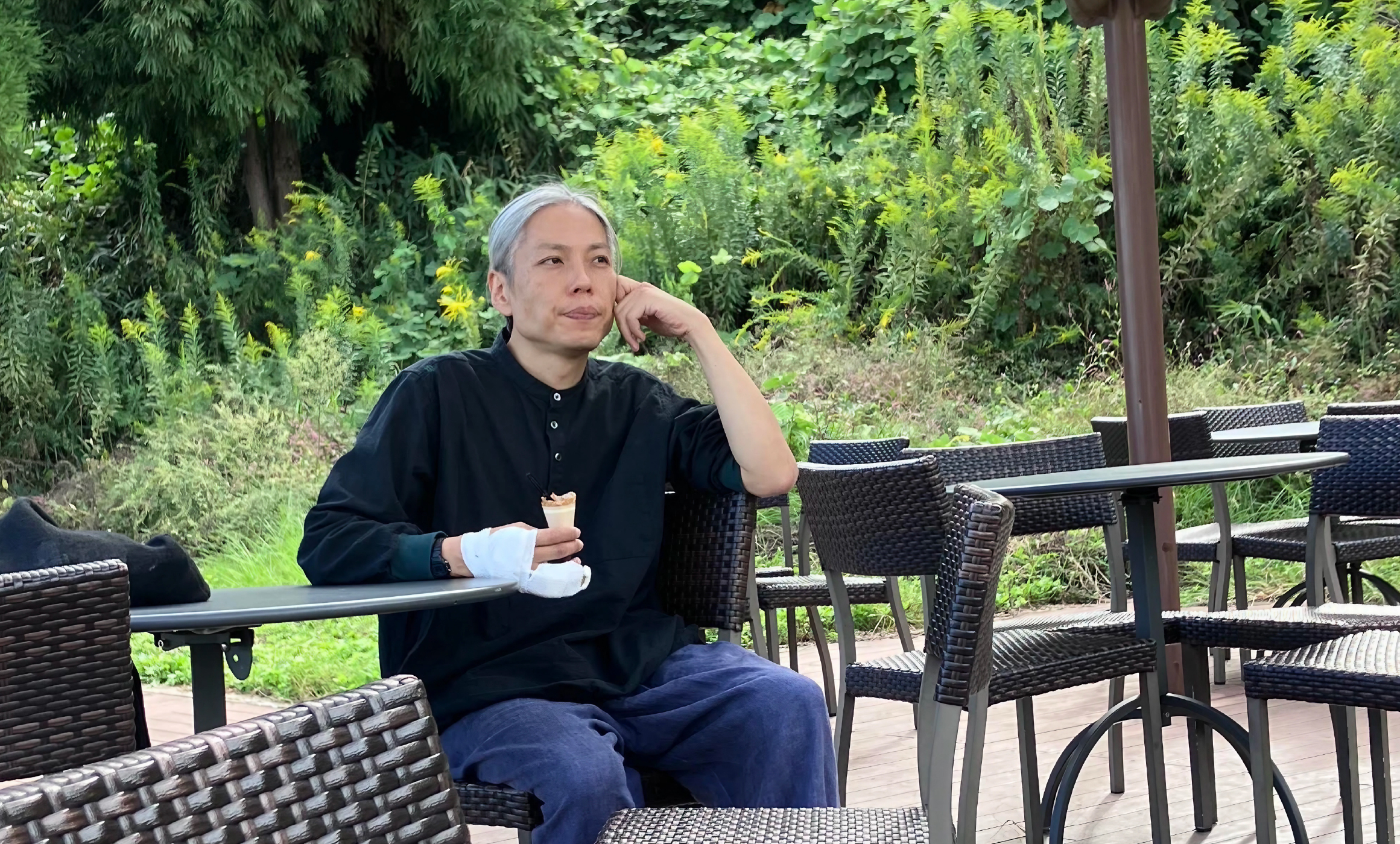
Tetsuya Umeda’s work exists beyond genres and formats, traversing music, installation, sound, theater, performance, and sometimes chorale. Since college, Umeda began to build a reputation for improvised sound performances and installations in Osaka and continues to be a regular performer at avant-garde music festivals abroad. In addition, his site-specific sound installations and performances have been staged in galleries, museums, theatres, and biennials, earning him an international reputation in various fields, as has his work that, again, defies categorization into typical artistic genres.
Umeda says “It is my nature to listen to space, to place things in space, and to hear the materials of things” and has been presenting site-specific sound performances by placing everyday objects in space, making them move, and intervening with the sounds and rhythms. His work has expanded beyond closed spaces to include installations in empty houses in redevelopment areas, choirs with children in remote places, urban sounds encountered as boats cross rivers, and performances that invite audiences into and engage them in the hidden and undisclosed spaces of museums and theaters. In Umeda’s work, the performer and audience are not easily distinguishable, and sometimes the relationship is reversed. He envisions his work as “a flat playing ground with no boundaries between people and objects or between the work and the viewer” in which the relationships between objects exist on their own, moving as small individuals.
Tetsuya Umeda was born in Kumamoto, Japan, in 1980 and studied in Osaka, where he currently lives. He has had solo exhibitions at the Watari Museum of Contemporary Art in Tokyo (2023-2024), the Beppu Project (2020-2021), the Fukuoka Museum of Modern Art (2019), the Portland Museum of Art (2016), and the Breaker Project in Osaka (2014). He has participated in many international exhibitions, including the Okunoto Triennale (2023), the Ribbon Art Festival in Ishinomaki (2019, 2021-2022), the Saitama Triennale (2020), and the Sapporo International Festival (2017). His recent performances include Riverwalk (KYOTO EXPERIMENT, Kyoto, 2022), Age 0, September (Takatsuki Contemporary Theater, Osaka, 2022), Composite: Variations/Circle (Kunstenfestivaldesarts, Brussels, 2017), and INTERNSHIP (Asia Culture Center, Gwangju, 2016). He is also a recipient of the Tokyo Contemporary Art Award (2024-2026).
Chan Sook Choi
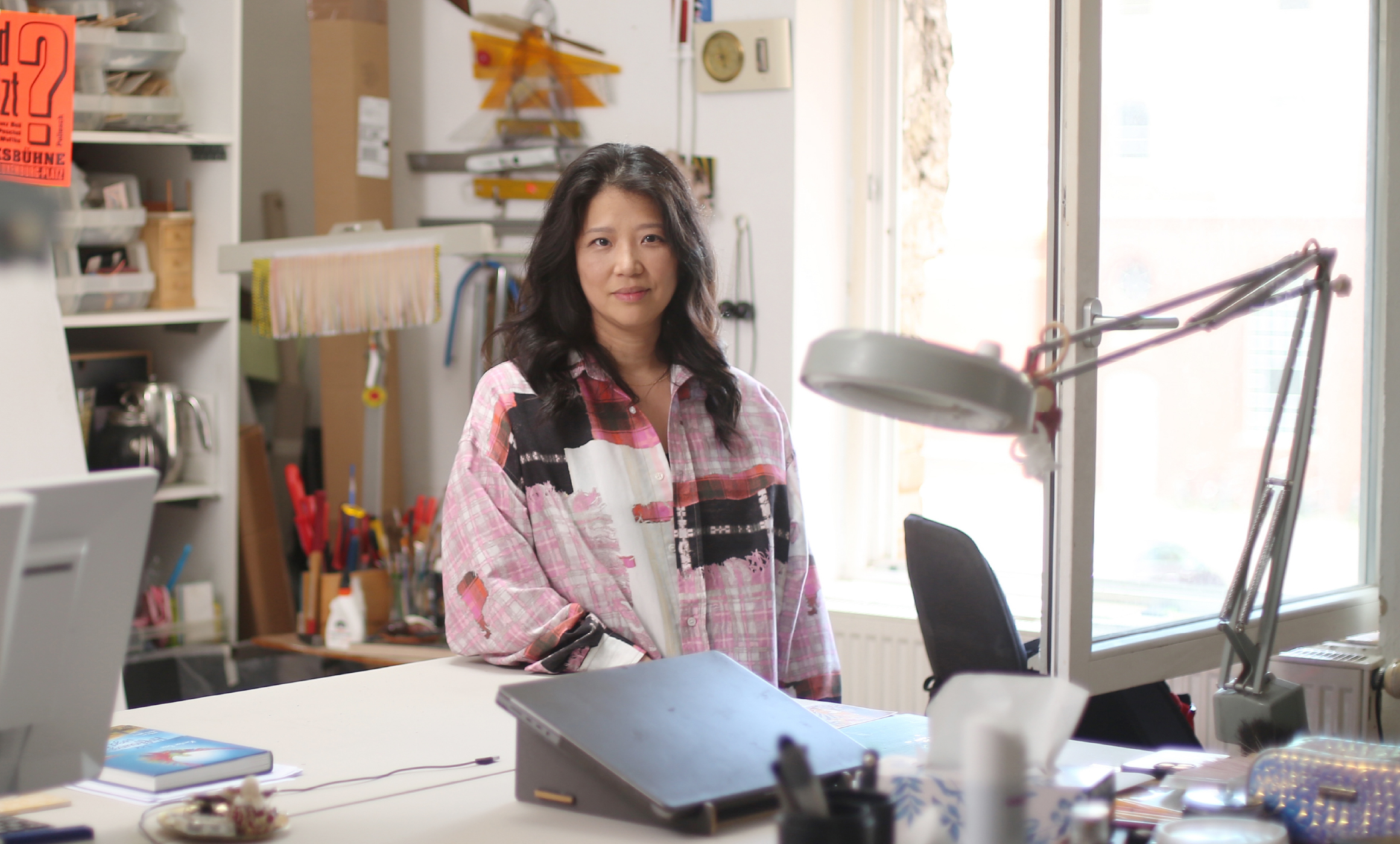
Chan Sook Choi explores narrative experimentations with the physical movement and mental migration based on artistic research as a methodology for her artistic practice of addressing contemporary social issues through interdisciplinary engagement. Focusing on the vibrations and marks created by the movement of fragile beings that are bound to be pushed aside or leaked from somewhere, the artist traces their paths and records the subjective existential situations left behind by humans and non-humans in various forms. Sensitively deconstructing history and events, otherwise known as fixed entities, the artist translates the voices she encounters locally into her work and places them within a phenomenological and fluid terrain constructed of microscopic light, multi-dimensional space, and relative temporality. The voices of the excluded survivors and the victims are expressed with poetry and songs. By using images, text, and sound, significant events are recreated as hyper-subjective realities through fiction and documentary.
Chan Sook Choi is based in Seoul and Berlin. Choi studied Painting at Chugye University for the Arts and Visual Communication at the University of the Arts Berlin. She holds a master’s degree in Art and Media and Visual Communication from the University of the Arts Berlin and continued her studies in the Meisterschüler*innen program in Media Arts. Choi’s solo exhibitions were held at the Digital Art Center in Taipei (2020), the Art Sonje Center in Seoul (2017), and the Humboldt Forum in Berlin (2017). She participated in group exhibitions, including the 12th Seoul Mediacity Biennale (2023), the Gwangju Media Art Festival (2023), the Boalsburg Heritage Museum (2022), the Kuandu Museum of Contemporary Art in Taipei (2022), the Ars Electronica Festival in Linz (2019), and the Culture Station Seoul 284 (2019). Choi was the recipient of the Today’s Artist Award awarded by the Ministry of Culture, Sports and Tourism in 2022, the Korea Artist Prize awarded by the National Museum of Modern and Contemporary Art Korea and the SBS Foundation in 2021, and the VH AWARD awarded by the Hyundai Motor Group in 2019. She has also received a working scholarship from the Stiftung Kunstfonds Bonn in 2021 and a fellowship from the Dr. Otto and Ilse Augustin Foundation and the Stadtmuseum Berlin in 2017.
Humming Chorus





